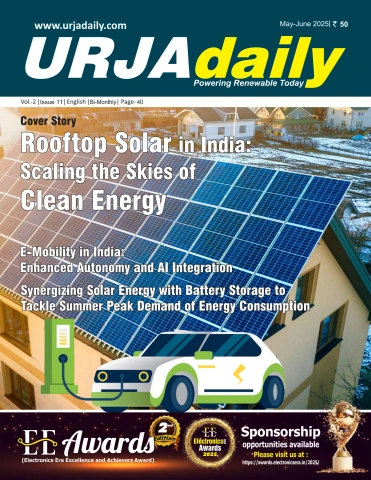The global community stands at a critical junction in the climate crisis. Earth Day 2025 arrives not just as an annual observance, but as a strategic checkpoint in our collective pursuit of a liveable planet. This year’s theme, “Our Power, Our Planet”, reflects a growing global consensus, i.e., the imperative transition to an ecosystem which is clean and have a sustainable and conservative energy systems.
According to the WEF Global Risks Report 2025, climate-related risks, such as extreme weather, biodiversity loss, resource scarcity and critical changes to earth system are dominating the long-term threat landscape. At the same time, the COP28 outcomes emphasized a historic global agreement to transition away from fossil fuels and triple renewable energy capacity by 2030. These initiatives echo the pressing need to cut greenhouse gas emissions by 43% by the end of this decade to align with the United Nations Sustainable Development Goals (SDGs).
A recent report by IPE Global & Esri India highlighted that about 85% of India’s districts are exposed to extreme climate events, while 45 per cent are witnessing a “swapping” trend. India will require up to US$200 billion in annual investments to fulfil its climate targets, further needing considerate actions which demands precision, authoritative data, and integrated decision-making tools. Geospatial Information Systems (GIS) has come into focus, offering a vital foundation to understand, plan, and act on climate priorities with speed and scale.
With respect to this, Agendra Kumar, Managing Director, Esri India said, “The theme ‘Our Power, Our Planet’ is a powerful one that reminds us that collaboration is key for making a real difference. While climate action seems to take priority, though in silos, there is an urgent need to put our thoughts together and articulate concrete actions that can make a real impact. Technology will be a crucial enabler in our efforts. With this thought, Esri India collaborated with IPE Global to develop a Climate Risk Observatory (CRO) system- a centralized geospatial hub with climate maps, explorer apps, resources, and story maps. This observatory aims to offer a comprehensive suite of capabilities to empower governments and key decision-makers, so that they can navigate the complexities of climate-related challenges and mitigate risks by leveraging advanced data analytics and innovative strategies. Such efforts are needed to save our planet for future generations.”
Indian Government have also been making efforts with programs aimed at achieving the SDGs, such as Smart Cities, AMRUT, Swachh Bharat, Namami Gange, and Sangam Digital Twin, which use GIS technologies helping India align with the United Nations Sustainable Development Goals, including Climate Action (SDG 13), Clean Energy (SDG 7), and Sustainable Cities (SDG 11). GIS technology offers curated, accurate spatial datasets to power climate resilience, renewable energy mapping, and environmental protection.
Earth Day has become a global checkpoint demanding measurable action. People can contribute more effectively towards creating a more sustainable future if they acquire the knowledge, skills, attitudes and values necessary to shape the same. Education for Sustainable Development, of which education in GIS is an integral part, will empowers people to change the way they think and work towards a sustainable future.













